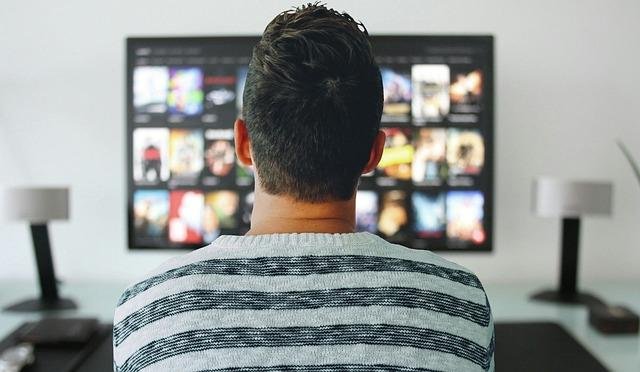In today’s digital age, the media wields unparalleled influence in molding societal attitudes, beliefs, and behaviors. From silver-screen movies to the 24-hour news cycle, media platforms play an integral role in how we perceive and interpret the world around us. Particularly with sensitive and complex issues like sexual assault, accurate and empathetic representation becomes paramount. Misinformation or misrepresentation can perpetuate harmful stereotypes, entrench victim-blaming attitudes, and obscure the reality faced by survivors. Conversely, accurate depictions can engender understanding, empathy, and constructive dialogue.
Exploring this nexus between media portrayal and public perception, this article discusses the ways in which TV shows, movies, and news outlets shape our views on sexual assault. Our goal is not only to inform but to advocate for media literacy and greater responsibility in representation. Because, ultimately, the way stories are told can determine how societies respond, heal, and progress.
Historical Perspective
Throughout the annals of media history, the portrayal of sexual assault has undergone a tumultuous transformation. Initially shrouded in silence and taboo, instances of sexual violence were often swept under the rug or hidden behind the curtains of cinema and television. However, as societal norms shifted, such as support behind employing a sexual assault attorney in Houston for survivors, so too did media narratives—moving from muted portrayals to oftentimes sensationalistic depictions in a bid to garner attention or evoke raw emotions from audiences. Key turning points include films like “The Accused” in 1988, which boldly addressed the issue of rape and victim-blaming, and TV series such as “Law & Order: Special Victims Unit,” which, since its inception in 1999, has been both lauded and criticized for its treatment of sexual assault topics. These productions, among others, have not only reflected society’s evolving understanding of sexual violence but have also played a role in shaping those very perceptions.
Television’s Evolving Portrayals
Television, over the years, has mirrored societal shifts in its representation of sexual assault. Initially entrenched in narratives of victim-blaming, recent years have seen a move towards more nuanced portrayals, reflecting a deeper understanding and sensitivity towards the issue.
Impactful Series and Episodes
Several series and individual episodes have left indelible marks on the public psyche, partly by romanticizing the antagonist by casting a pop culture icon to play the role. These productions serve as touchstones in media, either for their groundbreaking takes or for the controversies they sparked.
Perpetuating Harmful Myths
Unfortunately, not all representations have been progressive. Many shows, either inadvertently or deliberately, have perpetuated damaging myths about sexual assault, reinforcing stereotypes and misinforming audiences about the reality of such traumas.
Spotlight on Survivor Perspectives
A few commendable productions have taken the bold step of centering the narratives around survivors. These series provide a platform for the survivor to share their experience, hopefully fostering catharsis within the survivor and a greater empathy and understanding from the public.
“Law & Order: SVU” – A Double-Edged Sword
“Law & Order: Special Victims Unit” (SVU) stands as a media giant in its depiction of sexual crimes. While the show has been celebrated for bringing attention to numerous cases and issues, it has also been critiqued for occasionally veering into sensationalism, potentially influencing public perception in unintended ways.
Films on Sexual Assault
Cinema, with its vast reach, has produced a plethora of films touching on the theme of sexual assault. Pop-culture and cult films alike have wielded significant power in shaping societal views, with some becoming cultural landmarks for their bold portrayals.
Championing Survivor Voices
A commendable number of films have chosen to provide platforms for survivors’ stories. By authentically showcasing their experiences and struggles, these movies educate the public and foster empathy towards survivors.
Tracing Evolution in Cinema
From the early days of Hollywood to the present, the portrayal of sexual assault has seen significant shifts. An analysis reveals a transition from muted portrayals and obscured narratives to more explicit and nuanced dialogues about the issue.
From “Damsel in Distress” to Empowerment
The age-old “damsel in distress” trope often painted women as mere victims awaiting rescue. However, contemporary cinema is witnessing a surge in empowering narratives that highlight resilience, defiance, and recovery in the face of sexual violence.
News Media
The extensive coverage of high-profile cases and media trials seize public attention while illuminating the prevalence of sexual violence. With this, unfortunately comes problematic reporting methods. Victim-blaming rhetoric, the allure of sensationalism, and an emphasis on garnering views rather than adhering strictly to facts can distort the narrative, deepening the chasm of misunderstanding. However, amid these challenges lies the powerful potential of responsible journalism. By adhering to best practices and established guidelines, the news media can ensure that the stories of survivors are told with accuracy, dignity, and respect, ultimately fostering a more informed and empathetic society.
Implications on Public Perception
Influencing Societal Understandings
Media portrayals, particularly those around sexual assault, wield significant power in shaping societal views on issues like consent, blame, and responsibility. When misrepresented or presented without nuance, these portrayals can distort collective understanding, leading to skewed perceptions.
Myth Propagation in Media
One of the profound impacts of media representation is its capacity to either challenge or reinforce deeply entrenched myths about sexual assault. Phrases like “It was what she was wearing” or “They were asking for it” have found reinforcement in certain media portrayals, perpetuating harmful and erroneous beliefs.
Media’s influence on societal perceptions emphasizes the profound responsibility borne by creators and outlets when it comes to discussing or portraying sexual assault, no matter what platform. Accurate and empathetic portrayals of sexual assault can pave the way for increased societal understanding, shattering misconceptions and fostering genuine empathy. Media can serve as an educational tool, enlightening audiences about the multifaceted realities of survivors and how to provide support. Only through such diligent representation can we hope to foster a society that understands, supports, and stands in solidarity with survivors.

